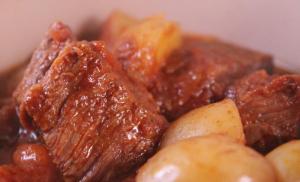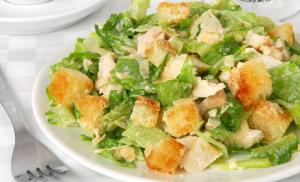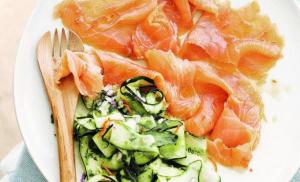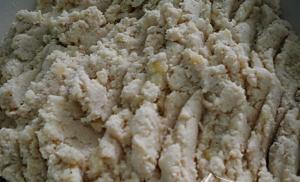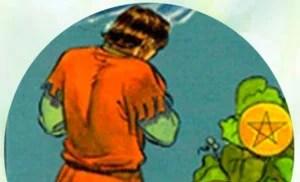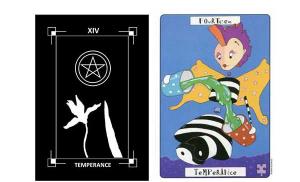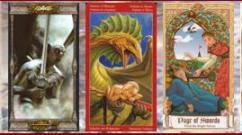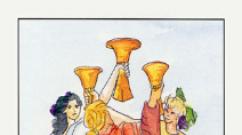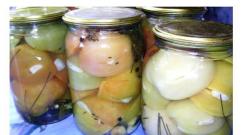Why does a mother rabbit strangle her babies? Rabbit eating offspring: probable causes and countermeasures
When breeding rabbits, novice farmers are often faced with a situation where the female begins to eat or trample her offspring. It would be useful for any rabbit breeder to know why a mother rabbit eats her babies.
Like all animals, rabbits have maternal instincts. Approximately 3-5 days before giving birth, the female begins to build a nest. To create it, she uses grass and even plucks her own fluff. To help her in this difficult task, livestock breeders often put an additional portion of grass and dry feathers in the cage.

When the birth begins, the female rabbit helps the newborns free themselves from the amniotic membrane, and also bites their umbilical cord. After the birth of the cubs, the female rabbit daytime may be indifferent to small squeaking lumps. She behaves in such a way as not to attract unnecessary attention to the nest.
You can make sure that the female does not intend to start cannibalism by appearance kids. If newborn rabbits are hidden from prying eyes in a nest and sleep all together, this indicates that they are well-fed and do not need anything.
Hungry babies will squeak and crawl around the nest. At the same time, their bellies will be empty and their skin will be wrinkled. Well-fed babies look like inflated “balls”. Their skin on their bellies is straightened and smooth. Fed offspring will sleep most of the day.
Why does a mother rabbit eat her babies?

Despite the presence of maternal instinct, it is not uncommon for rabbits to eat their own rabbits. A female may eat her babies for a variety of reasons. Most often, the reason for cannibalism lies in the fact that the rabbit is in unsuitable conditions for raising offspring or is under severe stress. Also, the answer to the question of why a rabbit eats its cubs may lie in the following points:
- the female’s body lacks water or nutrients. In order to give birth and feed offspring, the animal must receive all the necessary substances and water;
- The female rabbit bears offspring for the first time. In this case, she is too diligent in caring for the babies. If during the care process it even slightly damages delicate skin baby, the mother can eat it at the sight of even a small drop of blood;
- the birth of a large number of babies (more than 8 pieces). In this case, the female can eat several cubs so that the remaining ones have the opportunity to fully feed;
- disruption of milk production. It can be either little or much. In the latter case, the nipples become rough and mastitis may develop. Moreover, this happens even if each little rabbit actively sucks the nipple.

If the mother ate only part of the rabbits, then they may have been born dead. Animals eat dead offspring so that the smell of decomposition does not attract the attention of predators.
To determine the reason for the inappropriate behavior of the female rabbit and prevent the death of the babies, the female must be constantly monitored after giving birth.
Why does a female trample and scatter her rabbits?
If the mother rabbit does not eat the babies, she may push them off the edge or throw them. She may also begin to throw them out of the nest and trample on them.
The female rabbit begins to scatter her offspring around the cage or trample them due to the fact that these animals are ready for mating immediately after giving birth. This inappropriate behavior is a consequence of hormonal imbalance, which leads to the release of certain hormones into the blood. As a result, the female, instead of the maternal instinct, experiences a desire to reproduce.

To normalize her behavior, the female rabbit is placed with a male. Otherwise, her offspring may suffer greatly, or even die. After mating, the mother’s behavior becomes adequate and she begins to care for her children.
A young rabbit who has given birth for the first time can also begin to behave inappropriately. The animal may become very stressed due to a change in environment, increased attention host and the appearance of small squeaking lumps in the cage.
Knowing why a mother rabbit eats her babies or tramples them, you can try to correct her behavior and save her offspring from death.
When breeding and keeping rabbits at home, you need to be prepared for troubles associated with various diseases or worse, the death of rabbits. Sometimes rabbit breeders may discover that a female rabbit, after giving birth, eats the baby rabbits or does not pay any attention to the newborns. To give a comprehensive answer to the question, let’s look at the reasons for this behavior of the female rabbit:
1.difficult birth and postpartum thirst
2.inflammation of the mammary glands or lack of milk altogether
3.natural disposal of stillborn rabbits
After giving birth, the female rabbit feels very thirsty and if she ate the baby, it means that she is trying to cover the lack of water in the body in this way. And to prevent this from happening, water should be freely available to the nursing rabbit and succulent food Same.
If a female has little milk or no milk at all, she may eat several cubs to let the rest survive. This happens due to a poor diet. Some other animals are also guilty of this behavior.
Dead rabbits with their corpse smell can attract unwanted guests to the nest ( dangerous predators) or lovers of carrion. Therefore, in order to save the living, the rabbit eats the dead. It is this reason that is the main answer to the question - why does a mother rabbit eat baby rabbits.
A new mother’s lack of interest in her offspring is an unnatural behavior, but there is an explanation for this behavior. In the wild, a female rabbit leaves the nest after feeding and stays away from the nest until the next feeding. She does this in order to divert the attention of predators from the nest, which is why domestic ones rabbits behave in a similar way. They visit the house with the rabbits only for feeding, and the rest of the time they are at the other end of the cage. From the outside it looks like a mother cuckoo. Here it is not the mother that needs to be assessed, but the condition of the rabbits. If they behave calmly , they don’t squeak, their tummies are full and the skin is taut - that means there’s nothing to worry about, everything is in perfect order.
Newborn rabbits should not be held in their arms in the first days, because if a foreign smell emanates from the babies, the mother rabbit may not accept the rabbits and refuse to feed them.
 To be on the safe side, mate several females at the same time. If one female rabbit refuses to feed her offspring, then her young rabbits can be placed with another nursing female rabbit. To prevent the new mother from smelling a trick and scattering her adopted children, you need to rub all the young rabbits (strangers and relatives) with wormwood. The same smell will emanate from the rabbits, the female rabbit will not notice the addition of the family and will safely feed everyone.
To be on the safe side, mate several females at the same time. If one female rabbit refuses to feed her offspring, then her young rabbits can be placed with another nursing female rabbit. To prevent the new mother from smelling a trick and scattering her adopted children, you need to rub all the young rabbits (strangers and relatives) with wormwood. The same smell will emanate from the rabbits, the female rabbit will not notice the addition of the family and will safely feed everyone.
And the unlucky mother, who does not want to feed her offspring, is discarded and does not happen to the male again.
You might find it interesting

Breeding rabbits is a very interesting activity, but at the same time, it requires certain knowledge. For a novice rabbit breeder, every little detail is important when choosing the right breed. And the ability of rabbits to adapt to climatic conditions...

How to save rabbits from the heat
When the thermometer consistently shows 35° and above, both people and animals suffer. Summer heat harms the life and health of rabbits. And sunstroke can hit not only...

How to raise rabbits in a pit
A little-known, but effective and quite accessible method A little history They knew how to breed and raise rabbits in pits back in ancient times, and therefore more experience has been accumulated in comparison with all others known today...
Breeding rabbits is considered very profitable from the point of view of their high fertility, rapid growth and high cost of rabbit meat. They are often very peaceful and friendly animals. However, there are cases when the cruelty of the eared ones is simply amazing. If a female rabbit ate baby rabbits, this confuses many novice farmers, although cannibalism in long-eared rabbits is a fairly common occurrence. The causes and methods of dealing with the problem are described below.
Why does a mother rabbit eat her babies and how to deal with it
Probably everyone who has encountered a problem has thought about the reasons for its occurrence. Why do rabbits eat their babies? Most likely, the first thing farmers pay attention to is the diet of their charges, and this is absolutely correct, but there are other nuances. If the rabbit ate the baby rabbits, the reasons may lie in the following:
- Poor nutrition and poor care- the main explanation for why rabbits eat their babies. After giving birth, the mother becomes very thirsty and also needs a lot of minerals and protein. If the owners forget to supply water or replace it with fresh water, the female can quickly make short work of her children.
- Lack of milk from the nursing mother or insufficient quantity. The female can immediately reduce the number of children in order to survive the remaining ones.
- The last and also very common reason why a female rabbit eats baby rabbits is disposal of dead cubs. Long-eared rodents, being very timid animals, give birth at the quietest time of day (at night or early in the morning). In this regard, about birth of the dead the farmer may simply not recognize the individuals, but record the fact of eating the young
Methods to combat cannibalism in rabbits
In addition to obvious cannibalism, rabbits can eat different parts of the body of their relatives; for example, they quite often like to gnaw each other’s ears. To prevent rabbit cannibalism, you must strictly adhere to the feeding regime and diet. If this does not help, then fumaric acid is added to the food - 100 kg per 1 ton of feed mixture.
Rabbit with babies
Why did the mother rabbit scatter the newborn rabbits?
In addition to eating babies, female rabbits very often scatter their newborn babies. This is often accompanied by a lack of appetite in the adult. The main reasons why a mother rabbit could scatter her newborn rabbits:
- poor conditions for living in a cage;
- the female determines that the babies are sick and will not survive;
- the mother is young and inexperienced;
- mastitis began;
- the female continues to estrus;
- little milk;
- problems with psychological state;
- the rabbit believes that the owners are behaving incorrectly towards her;
- The cubs fall out of the nest after finishing feeding.
Important! You should not touch small rabbits with your hands; a human smell will remain on their fur (fluff), which the rabbit does not like, and as a result, she may throw the baby rabbit away.
If we consider these reasons, then first of all you need to pay attention to the microclimate in the cage. According to the animal, it can be very dirty, hot or cold, humid, and dangerous.
Low temperature in the cages contributes to the development of mastitis in the rabbit. Due to this, it is painful for her to feed her rabbits, and she may refuse to feed them altogether. The same situation arises when the mother has little milk and the rabbits suckle her for a long time. As a result, the nipples begin to hurt, and as a result, the mother may throw the babies out of the nest.
In addition, newborns may be affected by low temperature. They become passive, move little, in turn, the mother considers them incompetent and begins to weed them out from the general litter. However, sometimes the rabbit deliberately weeds out the obviously weak babies, and continues to carefully care for the rest.
A few days after giving birth, the female rabbit may begin to sexual hunting. At the same time, she loses all maternal instincts, and, as a result, the rabbits are left without care and are simply scattered around the cage. Signs of sexual heat are marks, being in an excited restless state, moving the butt back when touched, etc.
The above signs of litter scattering can be eliminated or treated. But if the problem is in the rabbit’s psyche and she begins to behave inappropriately for no reason, then there is only one way out - to kill the animal, because she will only bring harm to everyone in the cage with her. As a rule, nervous and mentally unbalanced individuals are identified even before birth, which allows appropriate measures to be taken. It is better to immediately remove nervous female rabbits from the list of mothers and not allow them to reproduce.
If the nursing mother is in heat, you can place her with the rabbit or separate her for a day from the offspring. After that, return it to its place and see if the attitude has changed. If everything remains at the same level, then you will have to look for another nursing rabbit for the babies.
Important! A couple of weeks before giving birth, it is not recommended to move the rabbit to another cage. A few weeks before giving birth, you need to make a nest house in the cage so that expectant mother began to furnish it with fluff from her skin.
It is worth remembering that after the birth of offspring, a nursing mother should have a lot clean water and fresh food. If the mother rabbit begins to scatter the newborn rabbits, they should be collected back into the nest and covered with down. If the rabbit repeated this again, you should look for a new nurse. However, there are times when another rabbit refuses to feed. With this option, you need to feed the young animals yourself. For this purpose, pipettes are used, through which a mixture of milk (3 parts) and condensed milk (1 part) is fed. You need to feed every 2-3 hours for about 3 weeks, after which the babies can feed on their own.
Reasons for abandoning rabbits
There are basically two reasons for female rabbits abandoning their offspring:
- transition to a state of sexual hunting;
- inflammation of the mammary glands.
What to do if the mother rabbit abandoned her babies?
As a rule, all rabbits that are pregnant or have just given birth go into a state of hunting. However, for some this occurs almost unnoticed, while for others it occurs very violently. In this case, the female rabbit behaves inappropriately, stops eating, does not take care of the nest, etc. The solution to this problem is to place her in the rabbit’s care, and after covering, keep her in a cage separate from the rabbits for 12-24 hours. After this, she can be placed to the nest for the offspring. This behavior most often manifests itself in young individuals for whom this is their first litter. Older female rabbits tolerate the natural need more tolerably and rarely begin hunting in the stormy stage after childbirth.

The rabbit abandoned the babies
As for the second problem with the mammary glands, it may appear if a small amount of milk is sucked out of a nursing rabbit. The mammary gland becomes inflamed and it is painful for the mother to feed her babies. At first the gland simply turns red, then the area of redness increases and the nipple becomes hard. At the initial stage of inflammation of the mammary gland, you need to independently seat the rabbits on the nipples and press them against them. They will begin to suck milk, and thereby massage the nipples.
Important! If the mammary glands are already very inflamed, you should consult a veterinarian.
Most often, female rabbits feed their offspring 2 times a day, and then at a certain time. They rarely have a third meal. They eat early in the morning and in the evening; most likely, they will not start lunch in the middle of a noisy day. If there are always people near the cages (children especially like to crowd around) and it is very noisy there, then the animal gets scared and may begin to throw the cubs out of the nest. You also need to make sure that the babies are together, since when they lie separately, they become cold and digestion of food slows down. Sometimes a bottle of warm (not hot) water is used to provide extra warmth for babies.
In conclusion, it is worth noting that the most important thing for the normal functioning of rabbits is a strict diet, plenty of clean water, and care for their habitat. The calmness of the animals will also be important, i.e. the cages should be located in quiet places so that the rabbits can calmly breed and raise their offspring. Special attention Future young mothers who are preparing for childbirth should pay attention to preventing the development of mastitis in nursing mothers. You need to understand that preventing diseases in rabbits is much easier than treating them, and this simply requires constant supervision and care of the animals.
Rabbits cannot be accused of carnivorous desires, because by nature animals have a strong maternal instinct. Moreover, they eat plant foods. Beginning rabbit breeders experience a feeling of horror when a seemingly calm and “well-mannered” long-eared mother begins to eat her own cubs. What's happening to her? Where does this desire for blood and flesh come from? And what to do when a mother rabbit eats baby rabbits?
 3-5 days before the newly made furry mother begins to diligently collect suitable material for building a nest. She drags blades of grass into it and covers it with the fluff she plucked from herself. You can help her with this by throwing dry feathers and grass into the cage. At the moment of the birth of the babies, the female tries to do everything “in her mind”, helping the rabbits free themselves from the amniotic membrane and bite their umbilical cord. From the outside it seems that events are happening as they should.
3-5 days before the newly made furry mother begins to diligently collect suitable material for building a nest. She drags blades of grass into it and covers it with the fluff she plucked from herself. You can help her with this by throwing dry feathers and grass into the cage. At the moment of the birth of the babies, the female tries to do everything “in her mind”, helping the rabbits free themselves from the amniotic membrane and bite their umbilical cord. From the outside it seems that events are happening as they should.
Doubt can be caused by the indifferent attitude of the female rabbit towards her cubs during the daytime. In fact, the female is trying not to attract the attention of outside observers to the “house” of her cubs. You can refute your own arguments and make sure that the rabbit had no intentions of cannibalism by looking at the appearance of the cubs.
If they are still hidden in their nest, sleeping cuddled up to each other, it means that no one bothered them and they are well-fed. Hungry cubs will squeak and crawl restlessly. Stomachs are empty, skin is wrinkled. And well-fed babies look like inflated “balls”. The skin is smooth, straightened on their bellies, the cubs spend most of the day sleeping while amazing changes occur in their bodies. Baby rabbits grow and constantly need their mother's milk.
Reasons for eating
And yet, when a novice rabbit breeder believes that he has created optimal conditions for the long-eared mother and her babies, the female can commit her “bloody deed.” Why does an adult female eat her babies? This may happen due to various factors, each of which needs to be analyzed in great detail:
- The animal's body signals a lack of water.
- The female rabbit lacks vital substances that she cannot get from the food offered by her owner.
- The first-born female takes care of the rabbits with great zeal, but, seeing only a drop of blood on his body, she begins to bite him, and then commits her terrible “deed.”
- If some of the rabbits were born already dead, the adult animal eats them out of fear that the smell of decomposition of small corpses will attract the attention of predatory animals.
- When it comes into being a large number of eared fluffies (more than 8), the female can eat several of them to give the rest of the rabbits adequate nutrition.
- The female rabbit may have problems producing milk. It accumulates, the nipples become rough, dry, and painful. When touching them, the female experiences unpleasant sensations. Then she perceives the rabbits as little tormentors and can also deal with them at any moment.
There are actually quite a few reasons for eating little rabbits. In each individual case, you need to carefully observe the mother rabbit and her cubs, see how, why and how her behavior changes, and how the cubs feel.
Reasons for abandoning rabbits
 If disturbing moments are not ignored, there will certainly be an explanation for the carnivorous tendencies of an adult animal. When it is clarified why the female destroys her own cubs, this phenomenon can be prevented in the future.
If disturbing moments are not ignored, there will certainly be an explanation for the carnivorous tendencies of an adult animal. When it is clarified why the female destroys her own cubs, this phenomenon can be prevented in the future.
The mother rabbit can completely ignore the screaming, hungry babies, waiting for the next portion of milk. She sits in the other corner of the cage and doesn’t even know that it’s time to start motherly duties, otherwise the babies could die from exhaustion. This happens in young females who experience stress from sudden changes in life. She gives birth, and squeaking lumps appear. She is transplanted into another cage, where the conditions are different. She is visited much more often by her owner, whose intervention she perceives as a possible threat to her life. And if, in addition, there are sources nearby different sounds
, then the rabbit is in complete confusion. What kind of little rabbits are there when it is unknown what awaits her? It becomes clear why she ignores her cubs. Experiencing a state of extreme stress, she will not care for the offspring, because fear does not allow the maternal instinct to awaken.
The female may abandon the rabbits if she has problems with milk production. There are two options: she can simply ignore the cubs or eliminate the obstacle by destroying the defenseless babies. If she refuses to feed the offspring, urgent measures need to be taken. Otherwise, the cubs may die. If milk continues to be produced in normal quantities, and the female's nipples are not developed, this can threaten her own life.
When the bedding in the cage is changed almost daily,
The rabbit breeder can also observe another sad picture: an adult animal tramples the cubs, shamelessly running through the nest and its “contents”, not at all worried about the condition of the cubs. The female not only does not feed the cubs, but also scatters them to different corners of the cage. She behaves aggressively and restlessly. Why doesn’t she accept her babies and isn’t going to feed them? The reason may be that immediately afterwards she is ready to mate again.
Hormonal imbalance, a sharp release of hormones into the blood, is what makes her behavior so inappropriate. The instinctive desire for something must be urgently satisfied, otherwise the “adventures” in the cage will not end there, and the female will try new “tricks” from which the rabbits may suffer. When she tramples her rabbits, the weakest of them may die. If a female rabbit is placed in the same cage with a male, after covering the long-eared mother, as a rule, she immediately calms down and “remembers” her maternal purpose.
Watch this helpful video on what to do with a mother rabbit if she eats or tramples her babies.
What to do?
 Certain precautions will help prevent an unpleasant incident:
Certain precautions will help prevent an unpleasant incident:
- In the cage, the water container should be replenished daily. The water must be clean and fresh.
- To avoid any questions about why a female eats her own young, care must be taken to daily diet The animal had a variety of food: fresh hay, root vegetables, vitamin supplements, etc.
- The bedding in the cage needs to be changed once every few days, not every day. But it is advisable to clean the feeders daily.
- Stillborn rabbits must be promptly removed from the cage.
- Care must be taken to ensure that there is no noise near the rabbits’ “home”.
- You should not interfere too often in the rabbit’s life, changing objects in the cage, stirring up the nest, stroking the baby rabbits, etc. The smell of a person confuses the rabbit.
- You can try to develop rough nipples by lubricating them vegetable oil and having a massage. Then you should hold the female on her back and feed the hungry cubs one by one.
- If the rabbits are exhausted, and the long-eared mother has not yet started feeding them various reasons, they need to be placed with another nursing rabbit, having previously rubbed the “orphans” and their siblings with wormwood. If the abandoned rabbits have the same smell, the “stepmother” will be able to feed them too.
When the question of why the animal eats its “offspring” is clarified and accepted necessary measures, then the lives of the little cubs can be saved. Experienced rabbit breeders advise in such cases to play it safe by simultaneously mating several pairs of rabbits. Several eared nursing mothers are real opportunity save the cubs when one of them ignores her responsibilities.
The female prepared the nest, combed the fluff, and even covered the newborn babies, and after a while she climbed into the nest and chewed something. There is no doubt that the rabbit ate the baby rabbits, as at first glance it seems for no apparent reason. Almost every rabbit breeder has encountered such a shocking situation, sincerely not understanding the motives for such behavior of their pets. We propose to figure out together why the rabbit ate the baby rabbits, the reasons for this behavior, and what can be done to avoid such misunderstandings in the future. Rabbits and maternal instinct. After giving birth, the female is in no hurry to care for her offspring, and this is not at all due to the absence of maternal instinct, but due to physiological characteristics. She approaches the babies only a few times a day for no more than 10 minutes, most often at night, and during the day she can lie indifferently on the side opposite the queen cell, showing no visible interest in her children. Therefore, many people think that she does not care and abandoned her offspring. To exclude such suspicions, just pick up a few cubs and touch their bellies; most likely, they will be full, which means everything is in order and there is no need to worry. If not, you need to take emergency measures. Rabbits are not carnivores, and most breeds have a highly developed maternal instinct, although there are exceptions. Therefore, if a rabbit scattered, ate or does not feed her rabbits, then she had reasons for this. Why did the rabbit eat the baby rabbits? Most often, this can happen to a young female who is having her first litter, although more experienced mothers can do the same. In any case, it is not advisable to leave such females; they are subject to culling, since there is a very high probability that history will repeat itself again. Now let’s take a closer look at the reasons why a female rabbit eats baby rabbits. There are several of them. 1. Severe fear during or immediately after childbirth. It can be caused by unfamiliar sounds, the appearance of other pets (cats, dogs, birds) or rodents, which are not so uncommon on a rabbit farm 2. A female rabbit can eat baby rabbits in the absence of milk, or if there are stillborn babies in the litter. She will immediately try to get rid of them by scattering them in the corners of the queen cell or burying them deep under the straw. In this case, all offspring may suffer. 3. Quite often, immediately after giving birth, the female rabbit is in a state of intense heat. She becomes agitated, scatters food, spills water and may eat or throw the babies out of the nest. In such a situation, you need to take her to the male. Once covered, she usually calms down and becomes a great mom. Many rabbit breeders are afraid to do this, mistakenly believing that the rabbit will become pregnant again. There is no need to doubt it. Due to physiological characteristics, this will not happen in the first day after birth. 4. Many animals exhibit aggressive behavior after giving birth. And representatives of this species are no exception. This is caused by the desire to protect their offspring from any possible danger. Therefore, in order not to wonder why the female rabbit ate the babies immediately after giving birth, you should not take excessive care of her and the babies during this period. Provide her with the food and water she needs, and try to disturb her as little as possible.
